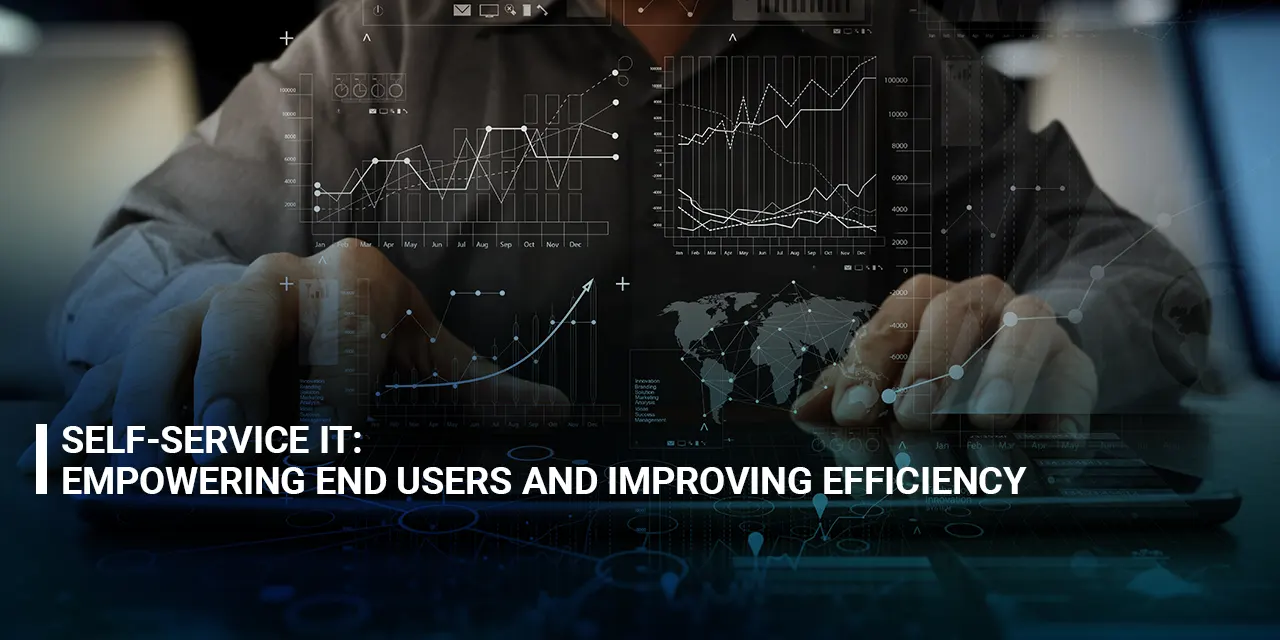Research
Share Knowledge
Brainstorm Ideas
What is Self-Service IT?
Self-service IT refers to the practice of enabling end users to perform various IT tasks and access IT resources without relying on direct assistance from the IT support team. It provides users with a user-friendly interface or portal where they can request services, troubleshoot issues, and access necessary resources independently. From requesting software installations to resetting passwords, self-service IT empowers users to take control of their IT needs.
Benefits of Self-Service IT
• Increased Efficiency and Productivity
Self-service IT significantly improves operational efficiency by reducing the reliance on IT support staff for routine tasks. Users can access resources and services instantly, eliminating the need for manual intervention and reducing response times. This streamlined process allows IT professionals to focus on more complex and strategic projects. Moreover, self-service IT empowers users to resolve simple technical issues on their own, minimizing downtime and increasing productivity across the organization.
• Enhanced User Satisfaction
With self-service IT, users have the freedom and flexibility to address their IT needs at their convenience. They can access services and resources 24/7 without being dependent on IT support availability. This self-reliance fosters a sense of empowerment and improves user satisfaction as individuals have greater control over their IT requirements. Self-service IT also provides transparency, allowing users to track the status of their requests and gain real-time updates, further enhancing user experience.
• Cost Optimization
Implementing self-service IT can lead to significant cost savings for organizations. By reducing the dependency on IT support staff for routine tasks, organizations can allocate resources more efficiently and optimize staff utilization. The automation and self-resolution of common IT issues also minimize the need for extensive troubleshooting and expensive support calls. As a result, organizations can redirect their IT budget towards strategic initiatives and innovation.
• Improved Service Quality and Consistency
Self-service IT enables organizations to provide standardized and consistent IT services. By implementing predefined workflows and service catalogs, organizations ensure that users follow standardized processes, reducing the likelihood of errors and improving service quality. Self-service IT platforms also allow organizations to enforce IT policies and security measures, ensuring compliance across the user base. This consistency enhances overall IT governance and reduces potential risks.
• Data-Driven Insights and Decision Making
Self-service IT platforms generate valuable data and insights that can be leveraged for continuous improvement. Organizations can analyze user behavior, service requests, and common issues to identify patterns and trends. These insights can inform decision making, allowing organizations to proactively address common user needs and anticipate potential bottlenecks. By understanding user preferences and pain points, organizations can tailor their IT services and resources to meet user expectations effectively.
How Can We Help?
ITPN has leading-edge capabilities, top-class experts, and pioneering experience in this area. Please contact us if you have any questions or need assistance regarding our services. Embrace self-service IT with ITPN and transform your user experience, promote a culture of empowerment, and position your organization for success in the digital era.
Conclusion
Implementing self-service IT offers numerous benefits to organizations, empowering end users and improving overall efficiency. By enabling users to access IT resources and services independently, organizations streamline processes, enhance productivity, and improve user satisfaction. Self-service IT reduces the dependency on IT support, allowing IT professionals to focus on strategic initiatives. It also optimizes costs, improves service quality and consistency, and generates valuable data-driven insights.

